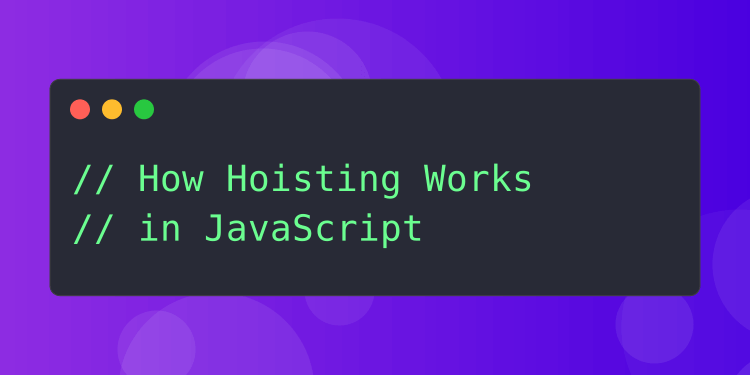Understanding how hoisting works in JavaScript is fundamental for developers to write efficient, bug-free code. In this article, we'll break down the concept of JavaScript hoisting, its effects on variables, functions, and classes, and how to avoid common pitfalls.
Whether you're a beginner or an experienced developer, this guide will help you master hoisting with practical examples and tips.
What is Hoisting in JavaScript?
Hoisting is JavaScript's default behavior of moving declarations to the top of their scope before code execution. This means that variables, functions, and classes can be referenced in your code before they are defined, albeit with some caveats.
How Does Hoisting Work in JavaScript?
Hoisting applies differently to variables, functions, and classes. Here's a closer look:
Variable Hoisting
In JavaScript, variable declarations using var, let, and const are hoisted. However, the behavior differs depending on the keyword used.
Hoisting with var
Variables declared with var are hoisted and initialized to undefined:
console.log(myVar); // undefinedvar myVar = 10;console.log(myVar); // 10Hoisting with let and const
Variables declared with let and const are hoisted but not initialized. Accessing them before the declaration results in a ReferenceError due to the Temporal Dead Zone (TDZ):
console.log(myLet); // ReferenceErrorlet myLet = 20;
console.log(myConst); // ReferenceErrorconst myConst = 30;Function Hoisting
Function Declarations
Function declarations are fully hoisted, meaning they can be called before they appear in the code:
sayHello();
function sayHello() { console.log("Hello, world!");}Function Expressions
Function expressions, including those defined using var, let, or const, are not hoisted in the same way:
sayHello(); // TypeError: sayHello is not a function
var sayHello = function () { console.log("Hello, world!");};Class Hoisting
Classes are hoisted in JavaScript, but like let and const, they remain in the Temporal Dead Zone until the declaration is executed:
const myInstance = new MyClass(); // ReferenceErrorclass MyClass { constructor() { console.log("Instance created"); }}Common Pitfalls of Hoisting
Unintended Behavior with var
Variables declared with var can lead to unexpected bugs due to their initialization to undefined:
console.log(counter); // undefinedvar counter = 5;Temporal Dead Zone Confusion
The Temporal Dead Zone can confuse developers unfamiliar with let and const behavior. Always declare variables before using them to avoid ReferenceErrors.
Best Practices to Avoid Hoisting Issues
- Use
letandconstInstead ofvar: Avoid usingvarto prevent unintentional behavior. - Declare Variables at the Top: Always declare variables at the top of their scope for better readability and to avoid confusion.
- Understand the Scope of Variables:
Familiarize yourself with block scope (
let,const) vs. function scope (var). - Write Clear, Predictable Code: Avoid relying on hoisting behavior. Declare functions and variables explicitly before using them.
FAQs About JavaScript Hoisting
- What gets hoisted in JavaScript?
Variable and function declarations are hoisted. However, only function declarations and var variables are initialized during the hoisting process.
- Are let and const hoisted?
Yes, but they remain in the Temporal Dead Zone until their declaration is executed.
- How does hoisting affect arrow functions?
Arrow functions assigned to variables behave like function expressions and are not hoisted in the same way as function declarations.
Conclusion
Hoisting is an important concept in JavaScript that influences how your code is interpreted. By understanding the nuances of hoisting and following best practices, you can write more reliable and maintainable code.
If you found this guide helpful, share it with your fellow developers and explore our blog for more JavaScript tips and tutorials.
